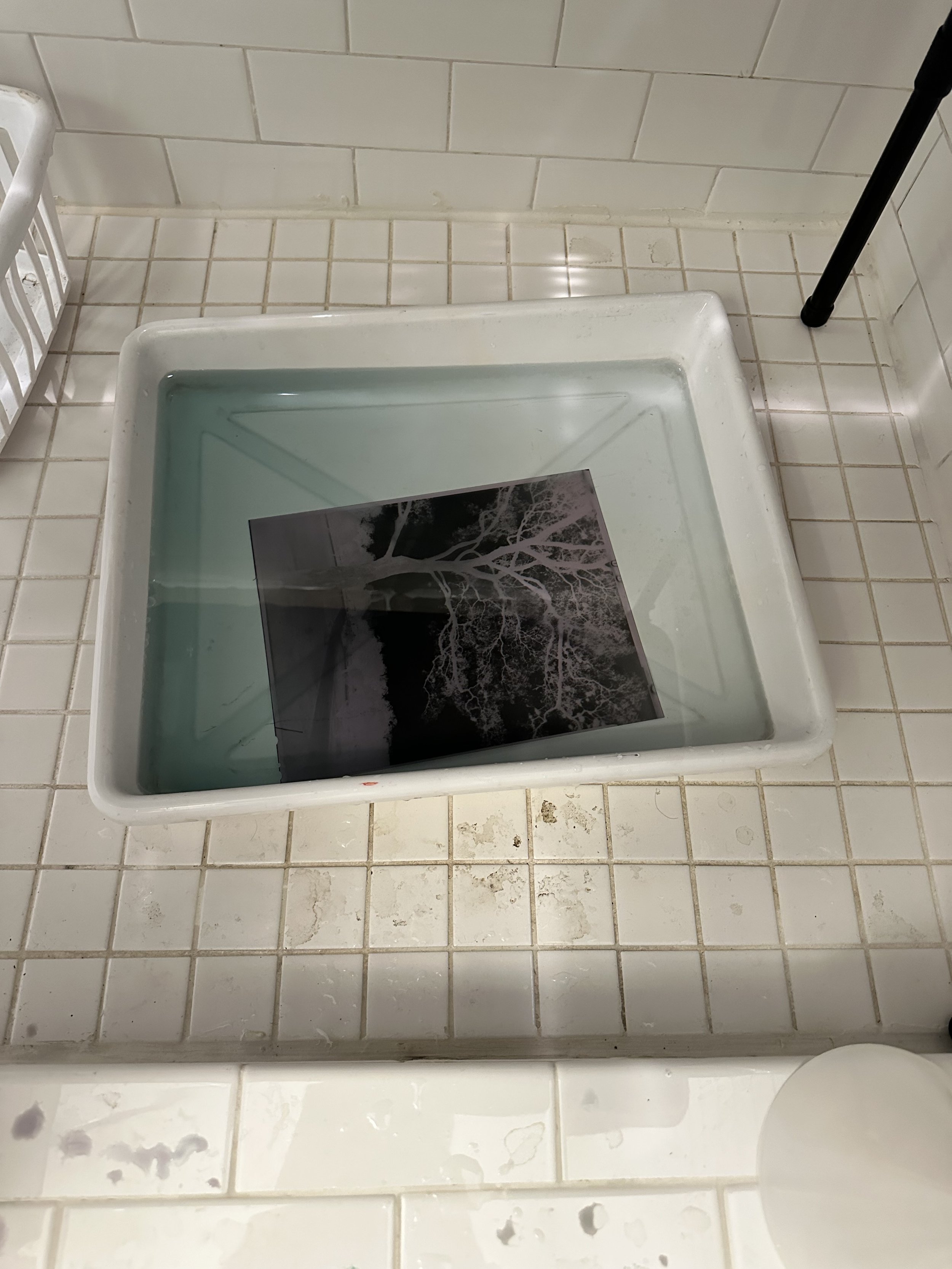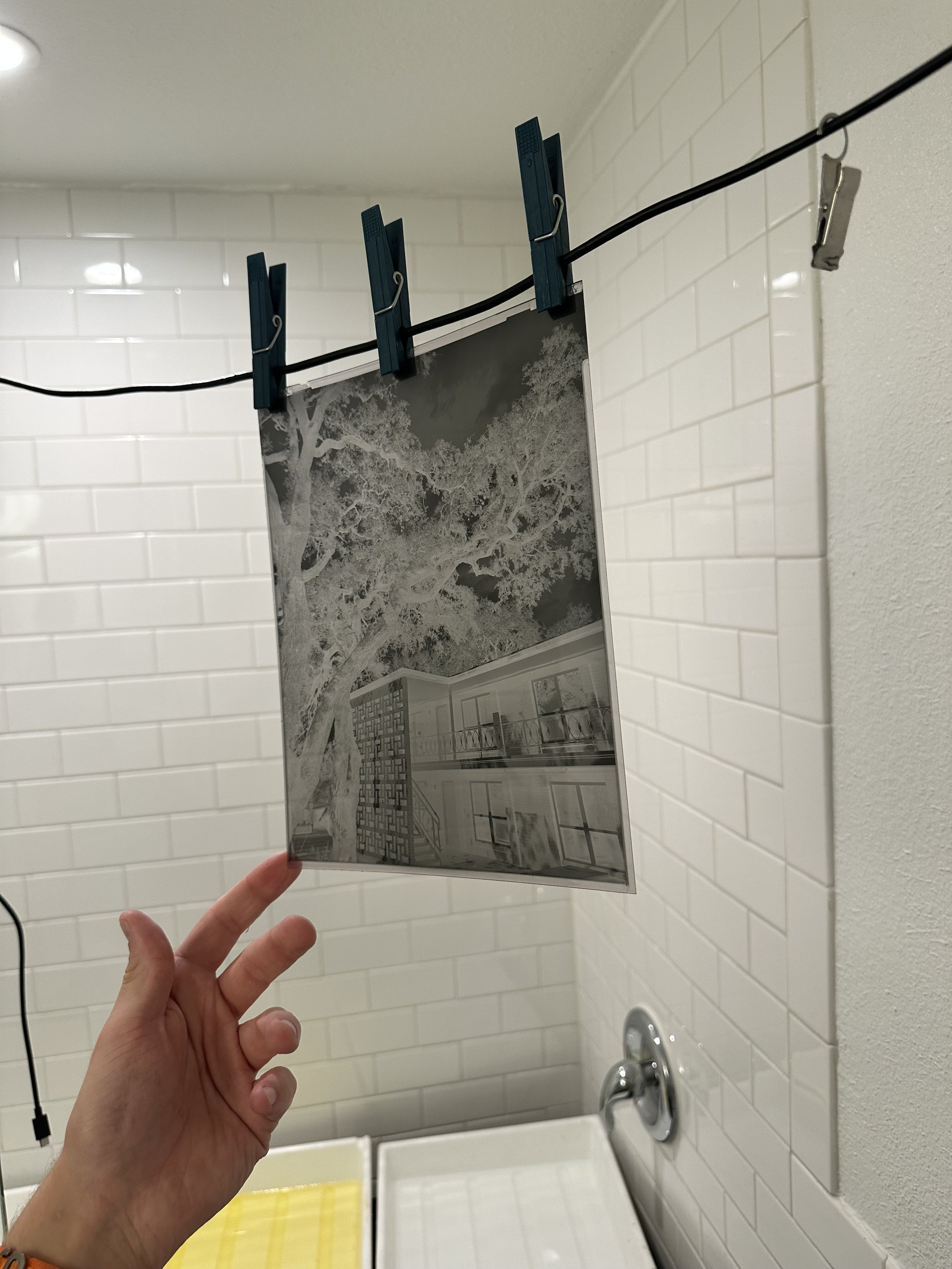Large Format
Big Bertha, my endearing large format camera, in all her glory.
When my dear friend, Michael Perry, sent me a photo of a wooden large format camera for sale at an auction in Southwest Virginia, I was skeptical at best. These dinosaurs of the film world are usually old and massive. Finding one that works is something of a challenge, especially only based on photos online. Having shot film for more than a year, I was intrigued at the thought. This would be my first time on large format— I’ve never shied away from first-times before. Moreover, large format is an especially difficult beast to conquer. Having exclusively shot medium format on my Hasselblad to that point, I wasn’t sure how I could process these large, expensive, 8x10” sheets of film. This endeavor would be a series of firsts chock-full of surprises, disappointments, and challenges.
Because my formal studies in photography were truncated by COVID-19, I was sans any formal training when I began my journey with Big Bertha. No matter, I was determined to find a way. Starting with darkroom paper, I began with long exposures (darkroom paper is very insensitive to light). These early explorations are documented in a YouTube video from the spring.
First time on Large Format | “Big Bertha”
Several challenges presented: darkroom paper, in addition to it’s insensitivity, is engineered to be especially ignorant of red light— I was quickly reminded of this when trying to shoot the red flower in the last two photographs above. In total, I shot that flower 20 times, never quite getting the exposure I was hoping for.
My first color image, at 4x5 inches, on Big Bertha
My third 4x5 inches color image on Big Bertha
Growing quickly tired of this sensitivity issue, I decided to shoot on a large format color film I felt comfortable developing: 4x5 Portra 400. With the help of Professor Sarah Phillips, I learned to mount the film on the 8x10 film holder and develop in a tank with the C-41 process. Still, challenges presented themselves.
Keeping the sheet film flat on the holder was difficult. Double sided tape helped. Framing the composition within the 8x10 ground glass also proved challenging. More so, Light leaks became even more apparent with this ISO 400 film (darkroom paper is roughly ISO 3).
I shot several sheets around the studio, with varying success in controlling light leaks, exploring the limits of this new medium in a camera one size too large.
My second color image, also 4x5 inches, on Big Bertha
As evident in my third color image on Big Bertha, focusing proved difficult for this smaller film size; if the film is elevated from the surface of the holder at all, the focusing mechanism of the ground glass renders ineffective. I felt the need to shoot larger film, but knew even more challenges awaited me.
To process color film in the C-41 Process, all of the chemistry must be kept at 102°F for the duration of the processing. With smaller film formats like 35mm, 120mm, and 4x5 inches, the film fits well into a 1 liter tank, which at-temperature chemistry is then poured in to. The light-proof tank can then be submerged in a water bath kept at a constant temperature, ensuring consistent development. 8x10 inch sheet film is simply too large to fit into a standard tank, never mind the volume of chemistry needed to fill such a tank.
After moving to Texas, and with support from several friends like George Collier and David Steadman, I began the journey of shooting 8x10 inch, black and white film on Big Bertha. Black and white film, unlike color, can be processed in room-temperature chemistry, allowing for tray development in a dark room. With space for it in my new apartment, I set up a developing bench in my shower, filling three trays with the needed chemistry.
A sheet of 8x10 sheet film in a tray of fixer remover on my shower floor
A sheet of 8x10 sheet film hanging to dry after the last water wash
Shooting 8x10 sheet film has been a remarkably rewarding experience— the process is tedious and time-intensive; 8x10 film is exceptionally good at collecting dust; the camera loves attracting light leaks. Despite the challenges, the results are breathtaking. Equipped with a powerful scanner, digital positives of these sheets of film can easily surpass 2 gigabytes. Click on each image below for a full-screen preview.
My first 8x10 sheet film shot on Big Bertha
My second 8x10 sheet film shot on Big Bertha
After these two landscape shots, I wanted to try shooting portraits. Below are my first two attempts at portraits on Big Bertha, both on 8x10 sheet film.
Miguel, in my living room, posing for a studio-style portrait
My dear sister, Quinlin, posing for a portrait where she didn’t realize her feet, adorned with my size 12 shoes, were in the shot
Get in touch with me! I’d love to hear your thoughts.















